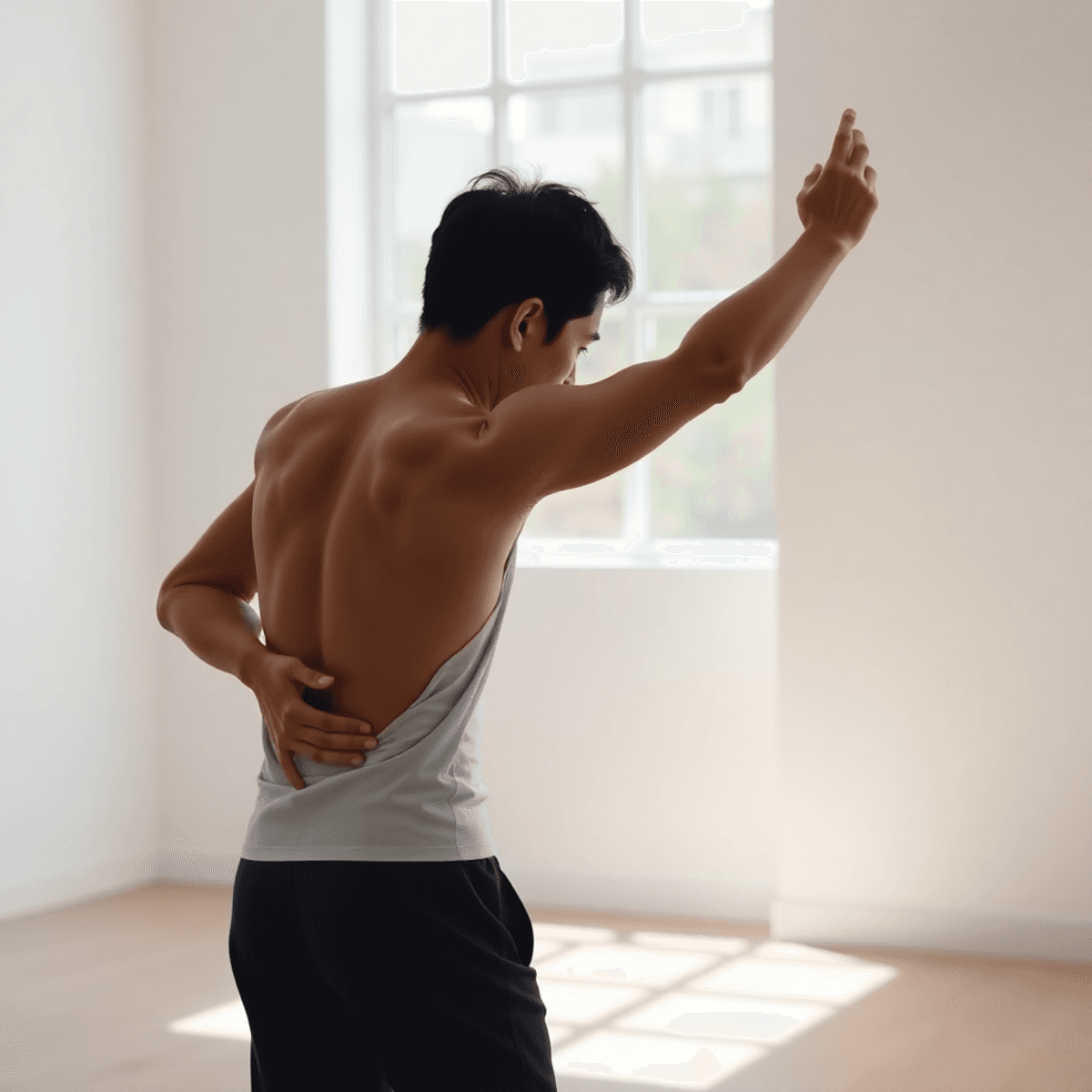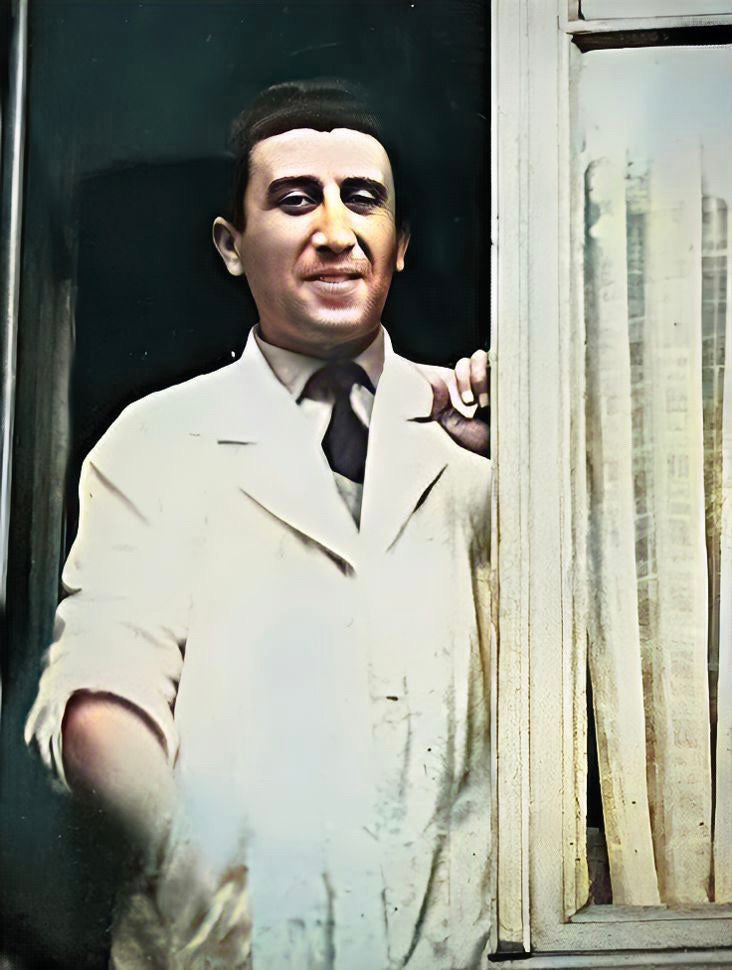Herniated Disc Pain? 5 Key Exercises to Help

Introduction
Living with a herniated disc can significantly disrupt your daily routine. Whether it affects the lower back (lumbar spine) or neck (cervical spine), this condition often leads to persistent back pain that hampers movement and reduces quality of life. Addressing back pain is crucial not just for comfort but also for maintaining overall well-being. Chronic discomfort can lead to additional health problems such as reduced mobility and mental stress.
This article focuses on effective strategies for managing herniated disc pain through exercise. We have curated 5 key exercises designed to provide relief and improve functionality. These exercises are easy to incorporate into your daily routine, offering a proactive approach to managing discomfort associated with a herniated disc.
Understanding Herniated Discs
A herniated disc occurs when the soft, gel-like centre of a spinal disc, known as the nucleus pulposus, pushes through a crack in the tougher exterior layer called the annulus fibrosus. These discs serve as cushions between the bones of the spine, acting as shock absorbers and allowing for flexible movement. When the nucleus pulposus protrudes, it can press on nearby nerves, leading to discomfort and pain.
Common symptoms of herniated discs include:
- Sciatica: A sharp or burning pain that radiates down the leg due to irritation of the sciatic nerve.
- Numbness or tingling: Often experienced in areas served by affected nerves.
- Muscle weakness: This may impair your ability to hold or lift items.
- Pain that worsens with specific movements such as sitting, bending forward, or sudden actions.
For effective diagnosis, healthcare professionals rely on a combination of methods:
- Medical history and symptom assessment: Understanding patient experiences and symptoms is crucial.
- Physical examination: Tests like the straight leg raise test help identify nerve root irritation.
- Imaging techniques: MRI or CT scans provide detailed images to confirm herniation and evaluate its severity.
When considering treatment for a herniated disc, options range from conservative to surgical approaches:
- Conservative treatments focus on relieving pain and improving function. These can include medications, physical therapy exercises tailored to strengthen muscles and improve posture, self-care education, and spinal injections.
- Surgical intervention may be necessary in cases where conservative treatments fail to provide relief or if neurological symptoms worsen. Surgery aims to remove the herniated portion of the disc to alleviate pressure on nerves.
Understanding these aspects is vital for managing symptoms effectively and choosing an appropriate treatment plan tailored to individual needs.
Risk Factors for Herniated Discs
Understanding the risk factors for herniated discs is essential in mitigating potential issues related to this condition. Certain demographic factors and lifestyle choices can significantly increase your chances of suffering from a herniated disc.
1. Age
Age is a primary risk factor; individuals in their 30s to 50s are most susceptible. As you age, the spinal discs lose some of their water content, making them less flexible and more prone to tearing or rupturing with even minor strains or twists.
2. Gender Differences
Gender differences also play a role. Studies indicate that men are approximately twice as likely to experience herniated discs compared to women. This disparity might relate to occupational hazards or varying lifestyles between genders.
3. Lifestyle Choices
Lifestyle choices further compound these risks:
- Smoking is known to reduce the oxygen supply to the disc cells, hastening degeneration and increasing vulnerability to herniation.
- Heavy lifting, especially when performed incorrectly, exerts excessive pressure on the spine and can lead to disc rupture.
- Engaging in physical activities without proper form or preparation can exacerbate these risks.
Awareness of these risk factors allows for better prevention strategies and highlights the importance of healthy living practices in maintaining spinal health.
The Role of Exercise in Herniated Disc Treatment
Exercise plays a crucial role in managing herniated disc pain through a combination of physical therapy and self-care education. These exercises, which focus on gentle movements, aim to relieve discomfort, reduce inflammation, and promote spinal health.
Physical Therapy
Physical therapy often includes a series of specific exercises that are designed to strengthen the muscles around the spine. This helps enhance stability and reduce strain on the affected discs. Not only does this approach help relieve pain, but it also improves mobility and functionality, allowing for a more active lifestyle.
Self-Care Education
Self-care education empowers individuals with the knowledge to manage their symptoms effectively outside of clinical settings. Understanding proper body mechanics, posture correction, and ergonomic adjustments can prevent further injury and promote healing.
Consistency is Key
To fully experience the benefits of these exercises, consistency is essential. Aim to perform them regularly—ideally 3-5 times per week over several weeks—to ensure that the muscles adapt and grow stronger, providing better support for the spine. This commitment to routine exercise is a fundamental aspect of conservative treatment methods for back pain.
By incorporating these strategies into your daily life, you can achieve significant improvements in both pain management and overall quality of life.
5 Key Exercises for Herniated Disc Pain Relief You Can Try Today!
1. Standing Lumbar Extension
Engaging in the right exercises can be transformative for those dealing with herniated disc pain, particularly when focusing on lower back relief. One such effective exercise is the Standing Lumbar Extension. Executing this exercise correctly can help alleviate discomfort associated with herniated discs.
Step-by-Step Instructions
To perform the Standing Lumbar Extension, follow these steps:
- Begin by standing with your feet shoulder-width apart. Ensure your posture is upright and relaxed.
- Place your hands on the small of your back for support.
- Gently arch your back by leaning backwards as far as comfort allows. Avoid any sudden or jerky movements.
- Hold the position briefly, approximately 1-2 seconds.
- Return to the starting position by slowly bringing your torso back to a neutral stance.
Repeat this sequence 10 times, taking care to maintain a controlled motion throughout.
Benefits for Lower Back Relief
The primary advantage of the Standing Lumbar Extension lies in its ability to:
- Reduce Pressure on Spinal Discs: By extending the spine, you can decrease pressure on the herniated area, potentially alleviating pain.
- Promote Spinal Alignment: Encourages proper posture and spinal alignment, which contributes to overall back health.
- Enhance Flexibility: Gradually improves flexibility in the lumbar region, aiding in movement and reducing stiffness.
- Strengthen Supporting Muscles: Engages and strengthens muscles supporting the spine, providing better stability and reducing strain on discs.
Incorporating this exercise into your routine can be beneficial, especially when performed consistently as part of a broader herniated disc treatment plan. Regular practice is key to experiencing sustained relief from discomfort.
By integrating these herniated disc exercises into your regular routine, you may find notable improvements not only in pain management but also in overall mobility and quality of life.
2. Standing Row with Resistance Band
Resistance band exercises for back pain, like the Standing Row, offer a practical and effective way to strengthen upper back muscles, which can be especially beneficial for those dealing with herniated disc pain. This exercise targets the muscles between your shoulder blades, aiding in better posture and reducing strain on your lower back.
Instructions on Execution and Proper Form:
- Setup:
- Attach a resistance band to a sturdy anchor point at chest height.
- Hold one end of the band in each hand, palms facing each other.
- Starting Position:
- Stand tall with feet shoulder-width apart.
- Slightly bend your knees and engage your core for stability.
- Execution:
- Pull the handles towards your body while keeping elbows close to your sides.
- Squeeze your shoulder blades together as you pull back.
- Ensure your shoulders stay down and away from your ears during the movement.
- Slowly return to the starting position by extending your arms forward.
- Repetitions:
- Aim for 10-15 repetitions per set, performing 2-3 sets as part of your routine.
Benefits for Upper Back Strengthening:
- The Standing Row is crucial for enhancing upper back strength, promoting correct spinal alignment. Strong upper back muscles support overall posture, which is vital when managing herniated disc symptoms.
- This exercise aids in balancing muscle strength across the upper body, reducing compensatory strain on the lower back and providing relief from associated discomfort.
Incorporating this exercise into your regular routine can contribute significantly to managing herniated disc pain effectively. Consistency is key; aim to perform these exercises three to five times a week as part of a comprehensive plan focusing on relieving herniated disc pain.
3. Prone on Elbows
The Prone on Elbows exercise is a gentle and effective way to alleviate discomfort associated with herniated disc issues. This exercise focuses on spinal alignment and helps reduce pressure on the affected discs, making it an essential part of a comprehensive routine aimed at managing back pain.
Position and Technique:
- Begin by lying face down on a flat surface, such as a yoga mat or carpet.
- Position your elbows directly under your shoulders, with forearms resting flat on the ground.
- Slowly raise your upper body, keeping your hips and pelvis in contact with the floor.
- Maintain the position for approximately 30 seconds, ensuring you breathe steadily to relax your muscles.
- Gradually increase the duration as comfort allows, aiming for up to 2 minutes.
Benefits for Spinal Alignment and Reducing Pressure:
- Encourages spinal extension, counteracting the forward flexion that often exacerbates pain from herniated discs.
- Decreases pressure on nerve roots by promoting proper posture and alignment of the vertebrae.
- Enhances flexibility in the lower back, facilitating improved movement and reduced stiffness over time.
- By integrating this exercise into your routine, you can contribute to a significant improvement in spinal health and symptom relief.
Incorporating the Prone on Elbows exercise into your regimen is just one aspect of addressing herniated disc discomfort through movement. Remember that consistency is key; performing these exercises regularly can lead to notable improvements in both pain management and overall well-being.
4. Cobra Pose
The Cobra Pose is a fundamental exercise in managing herniated disc pain, offering multiple benefits for your spine's health. This pose not only enhances flexibility but also supports the overall structural integrity of your back.
Instructions on How to Perform the Cobra Pose:
- Start by Lying Face Down: Position yourself on a yoga mat with your legs extended straight behind you and the tops of your feet resting on the ground.
- Place Your Hands Under Your Shoulders: Ensure your hands are flat on the floor, directly below your shoulders, with elbows close to your body.
- Engage Your Core Muscles: Tighten your abdominal muscles to support your lower back during the movement.
- Inhale and Lift Your Chest: As you take a deep breath in, gently press into your hands and lift your chest off the floor, keeping your elbows slightly bent. The movement should be slow and controlled.
- Keep Your Neck Neutral: Avoid tilting your head back excessively. Instead, look slightly forward or towards the floor to maintain alignment.
- Hold the Position: Maintain this lifted position for 15-30 seconds while breathing deeply.
- Lower Back Down Slowly: Exhale slowly as you lower yourself back onto the mat.
Repeating this exercise several times can significantly aid in stretching and strengthening the muscles around the spine, which is crucial for those dealing with herniated disc-related discomfort.
Benefits of Cobra Pose for Herniated Discs:
- Improves Flexibility: Regular practice enhances spinal flexibility, reducing stiffness and improving range of motion.
- Strengthens Back Muscles: Engaging back muscles during this pose helps in building strength essential for spinal support.
- Alleviates Tension: Stretching exercises like the Cobra Pose help relieve tension in the lower back, often caused by prolonged sitting or poor posture.
Incorporating this pose into your routine may provide notable relief from herniated disc symptoms, complementing other herniated disc exercises such as Standing Lumbar Extension and others we will explore further.
5. Sciatic Nerve Floss
Sciatic nerve flossing is a gentle exercise technique aimed at alleviating the nerve-related symptoms often associated with a herniated disc. This method focuses on mobilising the sciatic nerve, which can become irritated or compressed due to disc herniation.
How to Perform Sciatic Nerve Flossing:
- Start Position: Sit comfortably on a chair with your feet flat on the ground and your back straight.
- Initial Movement: Extend one leg out in front of you, keeping it parallel to the floor. Flex your foot towards your body.
- Neck Involvement: Simultaneously tilt your head downwards, bringing your chin towards your chest as you extend your leg.
- Alternate Movement: As you bring your leg back to the starting position, lift your head back to its neutral position.
- Repetition: Repeat this motion for 10-15 times on each leg, ensuring a smooth and controlled movement.
The benefit of sciatic nerve flossing lies in its ability to relieve pressure on the sciatic nerve, a common issue for those suffering from herniated discs. By reducing tension along the nerve pathway, this exercise can help alleviate symptoms such as leg pain, tingling, and numbness.
Incorporating sciatic nerve flossing into your routine can complement other herniated disc exercises like the standing lumbar extension. Consistent practice may lead to reduced discomfort and improved range of motion. Remember, these techniques are part of the Herniated Disc Pain? 5 Key Exercises to Help series designed for pain relief and better spine health.
For optimal results, combine this technique with other exercises discussed earlier in this guide. This holistic approach not only targets specific symptoms but also aids in overall spinal wellness.
Conclusion
Before starting any new exercise routine, especially with complex conditions like herniated discs, it's important to consult healthcare professionals. This ensures that the exercises are tailored to your specific needs and circumstances, providing safe and effective back pain relief strategies.
For those looking for a structured way to manage herniated disc pain, resources like Goodpath offer valuable support. Their personalised exercise videos, led by experienced physical therapists, can be a great addition to your treatment plan.
These five key exercises—Standing Lumbar Extension, Standing Row with Resistance Band, Prone on Elbows, Cobra Pose, and Sciatic Nerve Floss—are designed to reduce discomfort and improve mobility. Consistent practice is vital for achieving the best results. By incorporating these exercises into your routine, you're taking proactive steps towards enhancing your overall well-being and managing herniated disc pain effectively.
FAQs
What is a herniated disc?
A herniated disc occurs when the soft, gel-like center of a spinal disc bulges out through a tear in the outer layer. This can lead to pain and discomfort, often radiating down the leg, a condition known as sciatica.
What are common symptoms of herniated discs?
Common symptoms include sciatica, which is characterized by sharp or burning pain that radiates down the leg. Other symptoms may include numbness, tingling, and weakness in the affected area.
What risk factors contribute to herniated discs?
Key risk factors for herniated discs include age (most commonly affecting individuals in their 30s to 50s), gender differences (with studies indicating that men are more likely to be affected), and lifestyle choices such as smoking, which can exacerbate the condition.
How does exercise help with herniated disc pain?
Exercise plays a crucial role in managing herniated disc pain by promoting spinal health, improving flexibility, and strengthening core muscles. Consistency in performing specific exercises can lead to significant relief from pain.
What are some exercises recommended for relieving herniated disc pain?
Five key exercises include: 1) Standing Lumbar Extension, which helps relieve lower back pain; 2) Standing Row with Resistance Band; 3) Prone on Elbows for spinal alignment; 4) Cobra Pose for flexibility; and 5) Sciatic Nerve Floss for nerve mobility.
Is it safe to start an exercise routine if I have a herniated disc?
Before starting any new exercise routine, especially with a condition like a herniated disc, it is essential to consult with a healthcare professional or physical therapist. They can provide guidance tailored to your specific situation and ensure safety while exercising.












